By Cinderpelt, former med cat of Thunderclan
Borage Leaves: Fever
Tansy: Cough
Celandine: Sooths blind eyes
Lavender: Treats chills
Poppy Seeds: Sooths pain
Burdock Root: Treats rat bites
Cob Webs: Stops bleeding
Mouse Bile: Gets rid of ticks
Marigold: Infection
Chamomile: Soothes hearts...?
Cat Nip: Green Cough
Yarrow: Induces vomiting
Honey: Sore throughts
Thyme Leaves: Treats shock
HorseTial: Infected wounds
Daisy Leaves: Aching joints
Broom: Poultice for broken limbs
Feverfew: Fevers...duh.
Alder Bark: Tooth Aches
Colts Foot: Helps breathing
Chervil Root: Belly Aches
Ragwort: Strength
Nettles: Swelling
Juniper Berries: Belly aches and breathing
Cat Mint: Belly Aches and sore throughts
Water Mint: Belly Ache
Borage Leaves: Fever
Tansy: Cough
Celandine: Sooths blind eyes

Lavender: Treats chills

Poppy Seeds: Sooths pain
Burdock Root: Treats rat bites
Cob Webs: Stops bleeding
Mouse Bile: Gets rid of ticks
Marigold: Infection

Chamomile: Soothes hearts...?
Cat Nip: Green Cough
Yarrow: Induces vomiting
Honey: Sore throughts
Thyme Leaves: Treats shock
HorseTial: Infected wounds

Daisy Leaves: Aching joints
Broom: Poultice for broken limbs
Feverfew: Fevers...duh.
Alder Bark: Tooth Aches
Colts Foot: Helps breathing
Chervil Root: Belly Aches
Ragwort: Strength
Nettles: Swelling
Juniper Berries: Belly aches and breathing

Cat Mint: Belly Aches and sore throughts
Water Mint: Belly Ache
CINDERPELT'S GUIDE TO FELINE AILMENTSSMOKE INHALATION
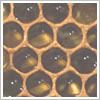

We Clan cats usually avoid all things to do with fire -- it's a rare site, but StarClan knows it can strike in times of drought. I have painful memories of what smoke inhalation can spell for a cat, as it was the death of my beloved mentor Yellowfang. Smoke may be uncommon, but it doesn't hurt to be prepared!SYMPTOMS: if cats have been exposed to a forest fire or inhaled smoke they will often have a bad cough and a soar throat. Talking and eating may be difficult, and their voice will often be reduced to a rasp.
TREATMENT: when a cat dies from smoke inhalation it's because the smoke has filled their lungs and suffocated them. When you're dealing with a patient chances are it isn't that serious and they will be suffering from a raw throat and maybe a cough. A bit of honey and poppyseeds will soothe the throat, and you may need to treat for shock. Coughs can be treated with tansy leaves. If a cat has burns and it is available to you, apply water soaked with alder bark.TICKS AND FLEAS
Ticks and fleas appear most often in the elder's den when a cat may not be able to groom properly because of failing mobility. It's often another elder or an apprentice who must help them by grooming, but sometimes a tick will be too burrowed in for a cat to get at without risking it just going deeper. In this case, Mousebile soaked moss can be pressed into the fur with the paws to suffocate the little critters and have them fall off. Make sure to wash your paws in a stream when you're done! Mousebile tastes awful.BELLYACHE
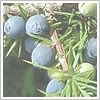


A cat with a bellyache will complain of a soar feeling in their stomach, which can come from eating too much, sickness, or poisoning. When the pain is mild a medicine cat should use discretion and reassure the patient instead of wasting herbs. However, for a sore stomach can be TREATED with a poultice of chervil, juniper, mallow or watermint. If a cat has not eaten their stomach may be sore, but there is little a medicine cat can do for this if prey is unavailable.ACHING JOINTS AND BONES


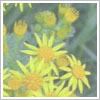
This ailment most often affects the elders den again, and is a result of damp nests, cold weather or just plain old age. It's important to teach apprentices how to dry moss carefully so you can avoid aching joints when possible! There are two closely related ailments here: aching joints, which is often a swelling of the joints and results in stiffness and aches that results from damp nests and age. The similar aching bones comes from cold weather and age, and is also stiffness.SYMPTOMS: a cat with aching joints may have trouble with full mobility, and will complain of pain at the joints. It's fairly easy to recognize.
TREATMENT: wrapping the afflicted area with wetted burdock can help relieve pain and stiffness, and daisy or a ragwort poultice is also a useful herb for treating aching joints.BEESTINGS AND BUG BITES
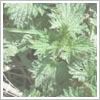
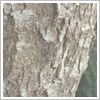

Beestings and other bug bites are usually not especially serious, a cat does not need
TREATMENT and the bite may be uncomfortable for a day or so, though it will heal. Occasionally though you may have a patient who has an especially sore, inconvenient, or infected bite which will need to be treated.SYMPTOMS: A cat with a beesting will complain about pain at the spot of the sting, which itself will be a small wound that may not even be visible. A small bump will appear from swelling.
TREATMENT: Nettle is especially good for beestings though onion is a fair substitute and will prevent infection. For swelling, apply water soaked with a piece of alder bark. Cobwebs and poppyseeds should not be necessary, the later if the cat is complaining of great pain.FEVERS

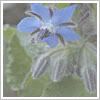
Fevers are more symptoms for colds and sickness then a complete ailment of their own, and appear in sicknesses such as greencough, whitecough, colds, carrionplace sickness and more, as a fever indicated an infection, which can by mild (in the case of Cloudkit when he came to the camp) and easily dealt with, to a warning for a much graver situation.SYMPTOMS: Touch your nose to a cat's pads to check for unusual heat. This indicates a fever.
TREATMENT: Fevers can be treated effectively with feverfew or borage.COLDS AND WHITECOUGH


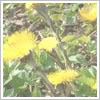
There is no established connection between a common cold and whitecough, though they are different sicknesses they are somewhat similar in symptoms. A cold should heal fast when rested properly, and can come about by cold wet fur most commonly. Whitecough on the other hand is dangerous because it can develop into greencough, which is deadly.SYMPTOMS: a cat with a cold will have a running nose, be very tired and sleep a lot as they recover, and sneeze continuously. Depending on the seriousness they may also have a soar throat and aches. Whitecough has all the above symptoms as well as coughing fits, streaming eyes and may have some shortness of breath, though it will be minor. Both sicknesses have fevers.
TREATMENT: borage or feverfew is a good herb to treat a high fever, and a poultice of feverfew can also be applied to relieve headaches from colds. Catmint is also highly effective, but is not recommended for casual use because of it's scarcity. Coltsfoot is good to open up lung passages if a cat has shortness of breath. The best cure for colds is a good amount of rest! Whitecough patients should be isolated from other cats until cured so the sickness does not spread.GREENCOUGH

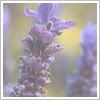

Greencough is a dangerous respiratory sickness that develops from whitecough. The difference? Greencough is a killer. It can spread quickly, and is particularly lethal to kits and elders. It appears in later leafbare or early newleaf, and must be confined.SYMPTOMS: Cats with greencough will experience a high fever, running nose, streaming eyes, extreme tiredness, breathing problems and wheezing. It's a respiratory illness, the equivalent of pneumonia in cats, and phlegm develops in the lungs, which creates coughing fits in the body. Cats will be able to do little else then sleep and cough until they get better, or die.
TREATMENT: Greencough is complex to treat, and symptoms need to be dealt with first. Lavender can bring down chills, while borage is used for quelling a fever. Coltsfoot is good for clearing the lungs and stopping wheezing, as feverfew, juniper berries and nettle roots are. Catmint is an effective medication for the sickness by quelling aches and opening the lungs, but only grows in twoleg gardens, making it hard to come by. Cats must be quarantined before the sickness can spread.TORN CLAW


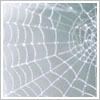
Most cats will undoubtedly tear a claw in their lifetime. This should not be all that much of a problem -- a cat may limp for a sunrise or two as it heals and there may be a bit of swelling and pain, and if there is bleeding, then cobwebs should be applied, and marigold to prevent infection. Poppyseeds should not be necessary unless the cat is complaining of intense pain.
Cloudtail limped up to her, holding one forepaw off the ground; blood trickled from where a claw had been torn out.
Sunset, page 14THORNS


You've heard your mentor deal with them I expect -- thorns turn strong warriors into pathetic kits, and they're not even all that bad! You have to tease them a little of course, I've heard full grown cats moaning like they're at StarClan's camp just to show me a thorn stuck in their pad. Twoleg debris are much more serious, which is why we train cats to stay away from twolegs!SYMPTOMS: A cat with a thorn will limp, probably wail about it, and their pads will be swollen. If they don't realize they have a thrown they will lick the pad persistently. An infection can develop when a cat treads on the paw too much or dirt gets into the wound.
TREATMENT: Pull the thorn out with your teeth -- it will hurt for a second, and then it will be over. The wound may bleed a bit, but it shouldn't be serious enough to demand your supply of cobwebs, just as well have the cat lick their paw carefully to clear out any debris and stop the bleeding. If there is an infection, apply marigold poultice, and if not you may want to apply a mild salve of chamomile to bring down swelling or a different herb to prevent infection.
[Hollypaw] peered closely at Millie's paw. Sure enough, a thorn was buried deep in the pad. To Hollypaw's dismay she could see blood and pus oozing around it. Leafpool was concentrating on Millie's paw with a detached intensity Hollypaw wished she could mimic. "Ow!" Millie leaped backward and began to lick her paw.
Leafpool was holding the thorn between her teeth. She spat it out. "Press the marigold into the wound with your paw," she told Hollypaw. Millie held out her soar paw, which was bleeding and swollen where the thorn had been stuck. Hollypaw shuddered and rubbed her paw gingerly onto Millie's swollen pad. Millie stayed very still, even though it must have hurt.
The Sight, page 164CARRIONPLACE DISEASE



Medicine cats don't have a real name for this, so I've given it my own. It's greatly feared in ShadowClan, and all apprentices are taught never to bring back rats as prey from carrionplace, lest they bring the epidemic into the Clan, where it will surely take lives. The disease is dangerous and very contagious -- and formerly incurable, that is, before I cured it!SYMPTOMS: The carrionplace sickness comes on and spreads quickly. A cat will find it harder to breath, much like greencough, with violet coughing fits that shake the entire body and a wheezing, labored breath. A cat will develop a fever before other symptoms arrive, and will also experience exhaustion, loss of appetite, and the desire to sleep a lot. The stench of the sickness is unmistakable, and will make your fur crawl. Usually a cat afflicted will die.
TREATMENT: Now, this is kind of embarrassing to admit, being the only one who's cured the sickness, but I don't remember what herbs I used! It was a mixture of herbs and berries . . . Must have used borage for the fever, maybe angelica, that tends to perk up an appetite, coltsfoot for breathing and to stop the awful wheezing, and maybe some juniper too for that. Bit of honey for the throat I expect, and feverfew for the cough. See! My memory isn't all that bad. I hope.
"They carry a disease I've seen before in ShadowClan." Yellowfang began to circle the ShadowClan cats, studying them but keeping her distance, "It killed many cats last time. It has no name, it comes from the rats that live on a Twoleg dump on the far side of ShadowClan territory." She glared at Littlecloud. "Surely the elders know those Twoleg rats carry sickness, and must never be taken as prey?"
Rising Storm, page 93CRACKED PADS


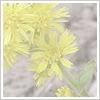
Cracked pads are uncomfortable -- but they are not very dangerous unless they become infected. Cracked pads are not especially common, long-distance running over hard surfaces (especially thunderpath) can be very damaging. Rocks, dirt and other debris can get stuck between pads and cause damage if they are not properly washed.SYMPTOMS: Cracked pads may appear worn, cracked and bleeding. Debris caught between claws and pads may be visible, and a cat will limp on the tender pads.
TREATMENT: When individual symptoms are treated, pads will heal on their own. Bleeding, if there is any, can be cleaned and stopped with cobwebs and horsetail poultice if necessary. Cleaning the pads can be done by the cat themselves, or another cat, with a good gentle wash. The washing is very important! The pads will now heal themselves, and if the cracks are deep a but of goldenrod salve will aid in recovery. Make sure the cats stays off their paws until their rested.
Fireheart lifted a foreleg and turned over his paw to look. He gazed blankly at the oozing blood until Sandstorm leaned forward and began to lick the grit from his wounds. It stung, but Fireheart didn't protest.
Rising Storm, page 139ANXIETY AND SHOCK
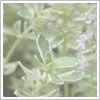


There can be many reasons for anxiety and shock, the death of a loved one perhaps, or a great disaster like ThunderClan's fire. It can create pain and lack of sleep (leading to exhaustion) so it may be necessary to treat. Keep in mind some cats may not want to take sedatives to treat this because they want to be alert, depending on the circumstances. When a cat is disturbed or upset it is crucial for a medicine cat to use discretion.SYMPTOMS: Anxiety will probably be pretty easy to see -- if it isn't, your cat probably doesn't need TREATMENT. There are different kinds though, but general symptoms include a fast heartbeat, uneasiness, tension, restlessness, need for isolation and possibly exhaustion.
TREATMENT: There are several herbs in which just the scents aid in calming cats, but you can have the cat eat chamomile and/or thyme for calming the nerves, and poppy seeds to help relax a cat and have them sleep. If they are willing, another cat can sit with them to keep them warm. Make sure they get rest!JUVENILE KIDNEY SYNDROME
This disease is uncommon, but Mudfur mentioned that his warrior Heavystep had a disease like this. We medicine cats don't have a real name for it, since it's uncommon, but the SYMPTOMS include a young but middle-aged cat suddenly becoming very thirsty, general weakness, and sometimes vomiting and loosing the ability to pass dirt. It can also weaken the pads on the foot and create cracks. There is no TREATMENT a cat with these symptoms will die, although I have heard that crushed beech leaves are useful for this ailment when eaten. Heavystep I'm not sure about -- his must not have been so serious, though he still had to retire do to weakness.CATARACTS AND BLINDNESS



There is little you can do for a cat who's eyes are injured so far as that blindness may be an option. I tried my hardest for Longtail in Firestar's Quest but unfortunately eye injuries are sensitive and tricky to deal with. Cobwebs for bleeding, and poppyseeds for pain is often the most you can do -- the rest is up to StarClan, though mallow can help heal ailments if the eyes. Cataracts on the other hand are completely different, and don't usually cause full blindness. They appear among aging cats and are visible by a semi-translucent white covering over the eye. They impair vision, but rarely cause full blindness. They're just a part of your elder's den.BROKEN BONES AND FRACTURES
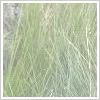


I'm asking all you medicine cats to personally do you absolute best when it comes to broken bones. I know the crippling effects of what a lack of mobility can do to a cat's body, and their spirit. But, having broken by back leg twice, or was it once... This reincarnation thing can get a bit confusing! I'm a bit of an expert I guess. A broken limb is no fun at all! Not only is it painful, but you have to be confined to the den for a long time as it heals.SYMPTOMS: You'll know if a cat has broken a limb! They often (I certainly did) wail about it, because it's very painful. You also can't walk on a broken limb. If a cat has been hit on the thunderpath or fallen out of a tree you should make sure they're okay.
TREATMENT: Broken bones are hard to treat, and sometimes, as in my case will never completely heal properly. There are success stories, like mine (or Cinderpaw's?) in Dark River. Jaypaw and Leafpool used long rushes bound to the leg with cobwebs to keep it in place for healing. Comfrey is quite the useful plant in this situation, as it speeds the recovery of all bruises, wounds and breaks, and will also deal with the pain (as will poppyseeds, standard usage rules apply). A poultice of mallow and barley will heal bruises and aid in the recovery of the breaks when applied to the area. Keep that cat in the medicine cat den, and keep them still, or else the rush dressing could loosen and the set would come undone. Once the leg has been healed then make sure they do some stretching exercises to ensure it's good as new.RAT AND SNAKE BITES

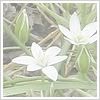
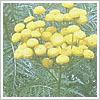
The TREATMENT for rat bites is pretty well-known, there are a few, and in the usual case they will be as easily healed as normal bites and scratches. However, rats tend to be pretty dirty animals, so you need to be prepared for infection! Snake bites are even more dangerous (I bet some ThunderClan medicine cats had to deal with curious apprentices at snakerocks) and potentially deadly, especially those of the adder, which we're most familiar with here in ThunderClan.SYMPTOMS: Well, rat bites are pretty obvious, and the cat will probably come to you first. Infection can include swelling, soreness, stiffness and sometimes pus around the wound. Snake bites on the other hand should be dealt with most urgency! A wound will appear as two small punctures, and symptoms can include intense pain, breathing problems, weakness, vomiting and even death.
TREATMENT: To ward off infection, treat rat bites with burdock root, which is a natural blood purifier. Even stronger is a ShadowClan secret Yellowfang told me (they tend to deal with lots of rat bites in that Clan) is the use of wild garlic -- your den mates won't thank you for it, but it works even better then burdock to make sure you'll be healed quickly. Tansy can also be used, though it is too mild to be recommended. Snake bites are a bit more difficult of course, and there isn't much you can do for a cat who has been bitten. Chances are, tragic as it may be, they will die.QUEENS AND KITTING



The birth of kittens is a beautiful and natural thing, and will usually go well and uneventful. However, there are many herbs that are useful in making kitting a less painful and smoother process, including helping queens feed their kits with milk. A queen may request a medicine cat be present for a birthing, and they often are, but a queen can give birth without help.
A queen's belly will slowly grow larger as the kits develop, usually over a two-moon or so period. At the end of which a she-cat will begin to have a sudden drop of body temperate (which can be checked by touching the pads with your nose). As she gets ready to give birth she may begin to purr and breath heavily, and her chest will rise and fall. She will then have to push out the kittens as she gives birth, which (or so the queens tell me) can be painful. Most cats will give birth to two to four kittens, but it is not unusual for a she-cat to only give birth to one. A she-cat will have to lick her kittens at birth to start them breathing and get rid of the filmy sac that covers them at birth.
This should go rather uneventfully! Poppyseeds should never be used on a pregnant queen because the she-cat needs to feel the pain to push out the kittens, but juniper, mallow or thyme is useful to give a queen before kitting to ensure a smooth birth. Feverfew is good to give queens after they've finished kitting, to expel anything left and to ease any pain or bleeding. Mallow and borage can both help a queen to keep a good supply of milk for their kits.
*Ww will hopefully soon expand in a "queens" section about the rank and duties of this member of the Clan, which will also explain the birthing process.POISONING AND NOXIOUS SUBSTANCES


As you might know, maybe your mentor told you, we Clan cats not only have the knowledge of medicine cats before us, but also have fine senses to tell us if something might be dangerous or not. That said, there are some exceptions to the rules (especially among troublesome kits!) that can lead to a cat being poisoned, which needs to be dealt with imminently and can be potentially disastrous.SYMPTOMS: You can tell is a cat is poisoned because they may vomit, salivate, have diluted pupils and even trouble breathing. Depending on the severity, they probably also have a bellyache. If you don't catch it early enough and the poison travels into the body, then StarClan be with the poor soul! They may suffer from convulsions, lack of consciousness, and even death.
TREATMENT: The best thing you can do for a poisoned cat is to get them to the medicine cat den, pronto! Catch it early and you have a good chance if you can make the cat throw up the poison with yarrow (mallow also works, though to a slower effect), and make sure another cat keeps them warm. I think it's best to educate young kits quick on the dangerous plants though, to avoid the drama of a poisoned kit.KNOWN POISONS We know of many plants that can be dangerous, but I worry for Leafpool in the new territory: there are so many things we don't know about that place! She'll be the one to discover and pass on all the new knowledge, but I hope no one gets hurt for her lack of knowledge, StarClan can only do so much.



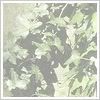
YEW (DEATHBERRIES) Most famous of all the deadly plants in the forest is the yew, we medicine cats have named it's fruit the deathberry, and rightly so. Even one of these will kill a grown cat, but some kits (like Cloudkit, Fireheart's kin) seem to think their bright red berries would make a tasty snack. Think again!
BLEEDING HEART Who would want to eat this plant anyway? It's a funny looking thing with green leaves and round, pink little flowers with white bottoms. But it can be deadly, so watch out!
CHERRIES These aren't especially common that I know of -- in fact I've never even seen them! But Yellowfang said that they are deep red fruits that grow on small trees. Again, they don't sound as tasty as a fresh caught mouse!
BUTTERCUPS These aren't too dangerous, but they might give your patient a nasty bellyache, and as a medicine cat I know that it's good to avoid those -- they can make grown warriors wail and whine like kits. The flowers and bright little yellow things.
HEMLOCK You queens keep your kits away from any hemlock! It's a dangerous plant that comes in lots of varieties, and is very dangerous.
ENGLISH IVY English ivy isn't super dangerous -- it'll just give you a stomach ache, but it is common in Clan territory. ShadowClan has even named one of their new apprentices after it haven't they? She's a noxious little blighter just like this plant! But then again, most ShadowClanners are (don't tell Yellowfang I've said that, she'll have my tail!)
NIGHTSHADE These little purple flowers remind me of honey bees, and they have a much nastier sting! The leaves and green fruit of the plant are deadly.
There are a lot of others out there of course, but those will be the most common and most dangerous you might encounter as a medicine cat. No treatment experimentation with these herbs, you hear?! Sometimes, like in Twilight twoleg substances can also be very dangerous poisons. The best rule for that is to just stay away from twolegs in general, what would you want with those dumb beasts anyway?
1. POISONING AND NOXIOUS SUBSTANCES List The Complete Medical Guide to Cats. List of highly toxic substances for cats borrowed from this book, selected from a longer list of herbs familiar to the Clan cats.
-----------------------------------------------------------------------------------------------------------
Pictures Of The Herbs
Borage Leaves
Camomile
Burdock Root
Ragwort
Marigold
Celendine
Chervil
Honey
Dock Leaves
Death Berries
Daisy
Juniper Berries
Colts Foot
Cat Mint
Lavender
Tansy
Cat Nip
Comfrey
Snake Root
Thyme
Yarrow
Wild Garlic
Poppy Seeds
HorseTail
Nettle Leaves




No comments:
Post a Comment